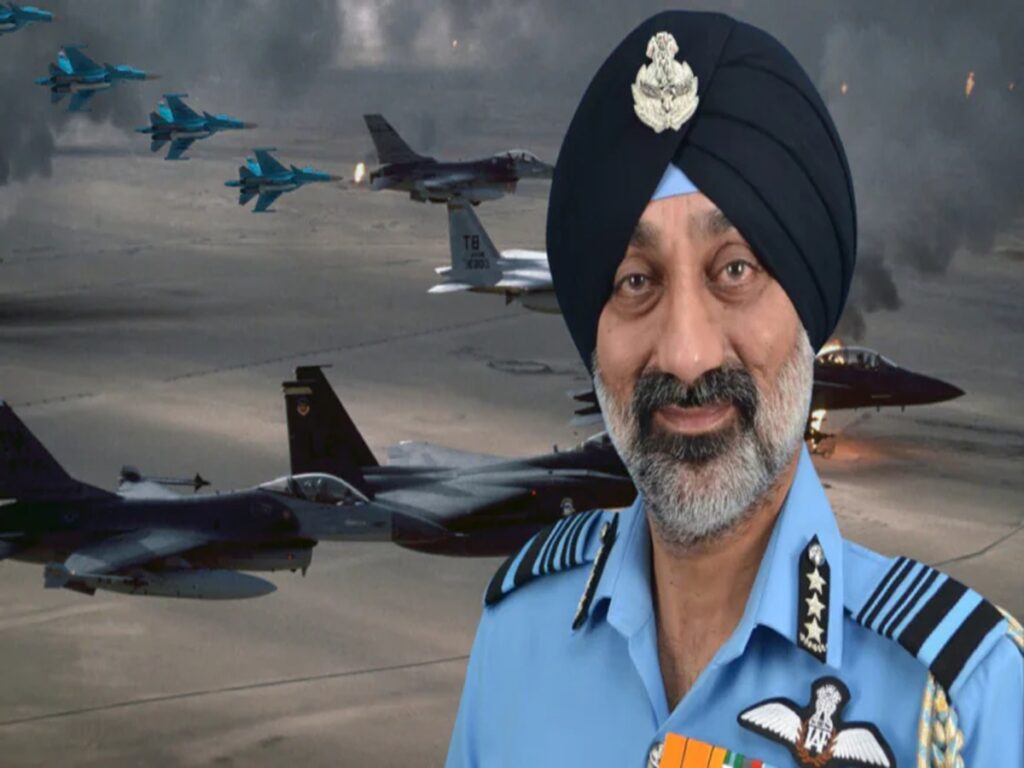Air Chief Marshal Amar Preet Singh’s sharp critique of defence project delays raises questions about the Modi government’s response and the security of India’s fighter jet and missile production systems.
New Delhi: Air Chief Marshal Amar Preet Singh on Thursday voiced serious concerns over delays in India’s defence projects, spotlighting the Indian Air Force’s (IAF) struggle with a shortage of advanced hardware, particularly stealth fighter jets, during a Confederation of Indian Industry (CII) summit in Delhi on Thursday. His remarks come amid heightened tensions following Operation Sindoor, a retaliatory strike against Pakistan after the April 22 Pahalgam terror attack that killed 26 civilians.
Persistent Delays Undermine Readiness
Singh highlighted that no defence project has been completed on time, stating, “We sign contracts knowing they won’t be delivered on schedule.” Key projects like the 83 Tejas Mk-1A jets, contracted with Hindustan Aeronautics Limited (HAL) in 2021, and 70 HTT-40 trainer aircraft remain undelivered. The Advanced Medium Combat Aircraft (AMCA), a fifth-generation stealth fighter, won’t see a prototype until 2035, with production delays pushing deployment further. Defence expert Rahul Bedi noted that bureaucratic hurdles often stretch project timelines to 7-10 years, far beyond the mandated 36-40 months, exacerbating the IAF’s shortfall—currently at 30 squadrons against a sanctioned 42.
Call for Indigenous Innovation
Singh stressed the urgent need for India to design and produce fighter jets and missiles domestically, beyond the ‘Make in India’ initiative. “We must focus on ‘Design in India’—self-reliance is the only solution,” he said. He pointed out India’s reliance on imported components, with even the Tejas jet using 45% foreign parts, including its American engine. Bedi echoed this, noting India’s failure to develop engines for aircraft, tanks, or helicopters, relying on imports from the US, France, and Germany. Singh called for faster ‘Make in India’ programs to address immediate needs while fostering long-term innovation.
Modi Government’s Response Under Scrutiny
The Modi government’s seriousness in addressing Singh’s concerns remains unclear. On May 29, the Defence Ministry approved the AMCA project’s execution model, signaling intent to boost self-reliance, but timelines remain a challenge. Earlier, on May 18, posts on X reported the government cleared Rs 40,000 crore for emergency military purchases, including drones, missiles, and artillery, amid Operation Sindoor tensions. However, Singh’s critique suggests systemic issues persist. Defence Secretary Rajesh Kumar Singh has highlighted reforms like faster licensing to spur industry growth, but experts question whether these measures address core inefficiencies. Former IAF Chief V.R. Chaudhary (Retd.) emphasized the need for firm timelines, stating, “We need assurances from contractors—delays force us to miss alternative options.”
Security Measures for Production Systems
Security of India’s defence production systems is a growing concern, especially post-Operation Sindoor, which exposed vulnerabilities during the four-day conflict with Pakistan. India’s air defence systems, like the indigenous Akash missile and Sudarshan Chakra, successfully neutralized Pakistani drones and missiles, but the IAF’s initial air losses, as admitted by CDS Anil Chauhan, underscore the need for robust protection. The Ordnance Factory Board canceled staff leaves after the Pahalgam attack, indicating heightened alertness. However, India’s reliance on foreign technology raises risks of supply chain disruptions—evident in delays of S-400 units from Russia due to the Ukraine conflict. To counter this, the government has involved private companies in AMCA production, aiming to diversify and secure the ecosystem. Yet, experts like Bedi warn that without addressing corruption—historically seen in scandals like Bofors and AgustaWestland—and enforcing strict timelines, production security remains at risk.
Strategic Imperative Amid Tensions
The recent conflict, involving drone and missile exchanges, highlighted the IAF’s pivotal role and the urgency of self-reliance. India’s military strength—fourth globally per 2025 Global Fire Power rankings—includes 2,229 aircraft, but lacks advanced stealth capabilities. Singh’s call for readiness aligns with PM Modi’s May 12 statement that India has only “paused” military action, signaling potential future retaliation. The government must balance immediate security needs with long-term indigenous development to ensure the IAF can defend against evolving threats.


